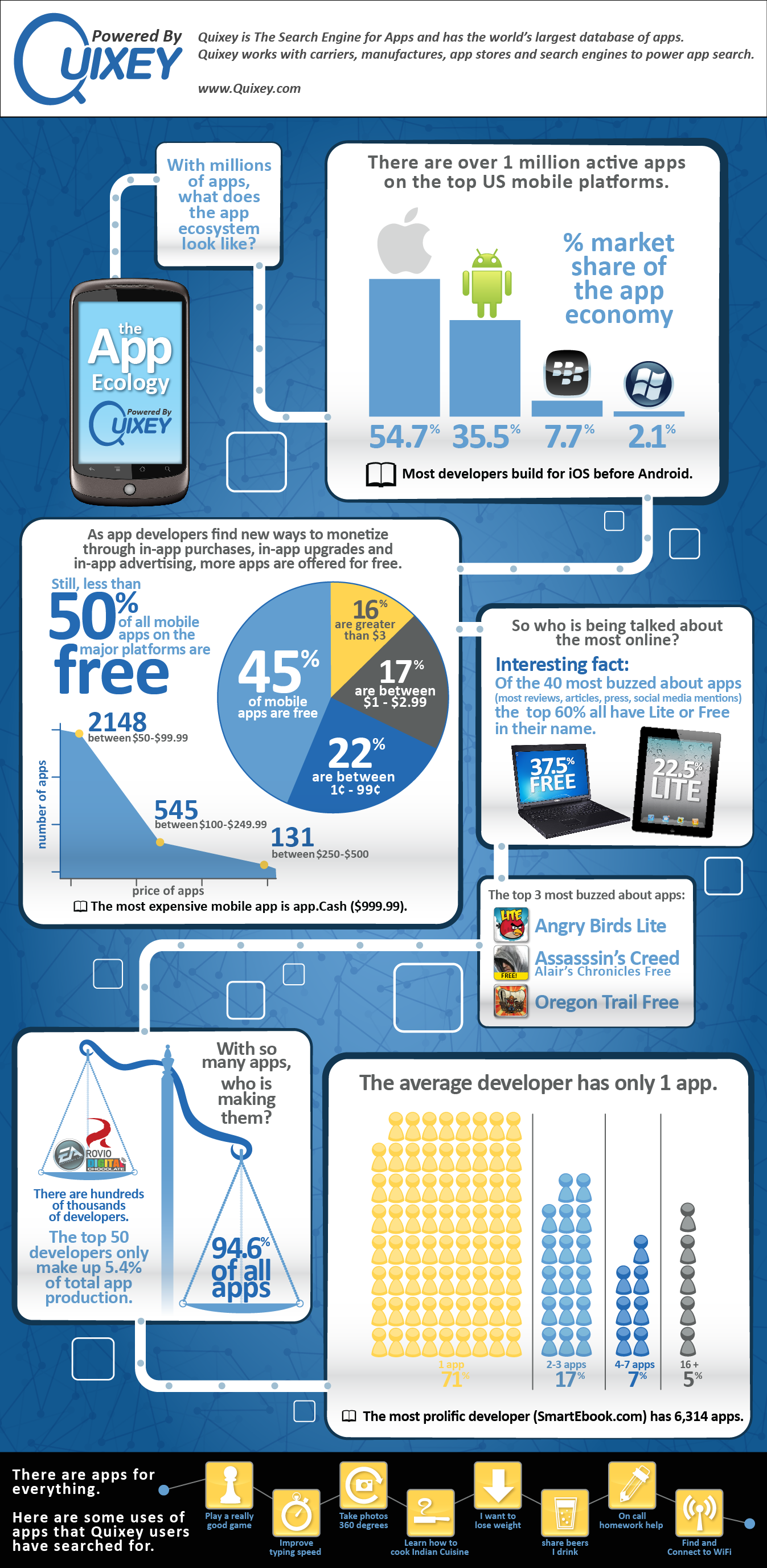Earlier today, we posted on some data from Pando Networks that shows that free-to-play online games, often overlooked in the hype around social and casual games, are growing just as fast and as furiously around the globe as their counterparts. Obviously, much of this has to do with the industry’s transition from paid to freemium models — the examples of which are numerous not only in online gaming, but for web and mobile apps on the whole — and even startups and SMBs making their way in the consumer Web.
While many of us probably take the rise of freemium for granted by now, some new stats and a nifty infographic from Quixey show that we are still very much in a transitional phase. As app developers work out the best ways to monetize their free products via in-app purchases, mobile advertising, rewards, deals, offers, incentivized downloads, and so on, free apps still comprise less than half of all mobile apps — across top mobile platforms.
Of course, as you can see in Quixey’s infographic below, apps that cost $50 and above only comprise about 0.3 percent of mobile apps, whereas apps priced between $1 and $50 make up about 32.6 percent of the app population. Considering 45 percent of apps are free today, that leaves the remaining some 22 percent of apps pricing between free and $0.99. So, upwards of 54 percent of mobile apps will cost you some real, hard currency to download.
And, in conjunction with this, it’s interesting to see that 60 percent of the “most buzzed about apps” have the words “free” or “lite” in the title, which seems to point to the fact that app stores are becoming increasingly crowded and overpopulated, so the best way to reach eyeballs and attract downloads is to assure consumers that the app being presented is cheap — if not free.
If that’s not enough to tip you off to the overwhelming increase of app developers jumping into the game (along with the hike in the total number of apps), the infographic shows that the top 50 app developers only produce about 5 percent of the content in app stores. Of course, potentially part of the reason that they’re top developers is that they produce less content — or what content they do produce is of a high quality. This is where the drek comes into play, those “cr-apps” that are pumped out as if on an assembly line.
Of the hundreds of thousands of developers out there, few are having their voices heard, and it seems that overproducing and churning out apps (hence the over one million active apps now available on top mobile platforms) isn’t helping their cause, either. The infographic poses some interesting questions for app developers — and app consumers. (Especially seen in tandem with Flurry’s report earlier this week on developer adoption of Android vs. iOS.)
Check it out below and let us know what you think.

